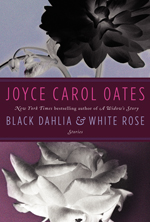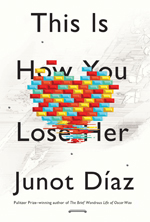 Hemingway’s Girl,
by Erika Robuck (New American Library), shows Ernest Hemingway through the eyes of his maid, Mariella, in Key West, Florida, during
the Depression Era. Mariella finds herself on a canvas
of contrasting colors—the bleak gray of poverty
chafing against a rouge of bacchanalia at the
Hemingway household. Robuck’s tale is one of love:
Mariella’s shipwrecked love for her family, Hemingway’s
forbidden lust for the maid, as well as the tender
affection of Gavin, the soldier struggling to find
love despite the trauma of war. Although the sea is
a constant backdrop, this novel is a far cry from
your average beach read. Robuck’s ocean is a complex
organism; its turbulent moods bring either the
bounty of marlin or thunderous currents of destruction.
The only thing that seems to survive this tempestuous
climate is Mariella’s spirit, even when the
undertow drags her into happiness and despair in
the same wave.
Hemingway’s Girl,
by Erika Robuck (New American Library), shows Ernest Hemingway through the eyes of his maid, Mariella, in Key West, Florida, during
the Depression Era. Mariella finds herself on a canvas
of contrasting colors—the bleak gray of poverty
chafing against a rouge of bacchanalia at the
Hemingway household. Robuck’s tale is one of love:
Mariella’s shipwrecked love for her family, Hemingway’s
forbidden lust for the maid, as well as the tender
affection of Gavin, the soldier struggling to find
love despite the trauma of war. Although the sea is
a constant backdrop, this novel is a far cry from
your average beach read. Robuck’s ocean is a complex
organism; its turbulent moods bring either the
bounty of marlin or thunderous currents of destruction.
The only thing that seems to survive this tempestuous
climate is Mariella’s spirit, even when the
undertow drags her into happiness and despair in
the same wave.
 Black Dahlia & White Rose, by Joyce Carol Oates (Ecco),
proves that, even more than 50 books deep into her oeuvre, Oates is still at the
top of her game. Her veteran command of plot contours and her treatment of
characters—who include a mother too whacked out on Valium to process her teenage
daughter’s lesbian proclivities and two Hollywood starlets who become embroiled
in the underbelly of showbiz where sex and violence blur in a sinister purée—are
bar none. This collection of short fiction tackles the thorny issue of
entrapment in all its forms. Oates writes of literal incarceration as well as
the imprisonment of broken homes and bad marriages, and communities stuck in
neutral. Oates’ prose deals blows that are far more powerful than her bare-bones
style suggests.
Black Dahlia & White Rose, by Joyce Carol Oates (Ecco),
proves that, even more than 50 books deep into her oeuvre, Oates is still at the
top of her game. Her veteran command of plot contours and her treatment of
characters—who include a mother too whacked out on Valium to process her teenage
daughter’s lesbian proclivities and two Hollywood starlets who become embroiled
in the underbelly of showbiz where sex and violence blur in a sinister purée—are
bar none. This collection of short fiction tackles the thorny issue of
entrapment in all its forms. Oates writes of literal incarceration as well as
the imprisonment of broken homes and bad marriages, and communities stuck in
neutral. Oates’ prose deals blows that are far more powerful than her bare-bones
style suggests.
 This
Is How You Lose Her, by Junot Díaz (Riverhead
Books), is imbued with the atomic energy of unstable, volatile, and
radioactive love. As a follow-up to Díaz’s last Pulitzer Prize-winning offering,
these pieces of short fiction hold their own. Watch Yunior, Díaz’s streetwise
scholar, as he rolls through
This
Is How You Lose Her, by Junot Díaz (Riverhead
Books), is imbued with the atomic energy of unstable, volatile, and
radioactive love. As a follow-up to Díaz’s last Pulitzer Prize-winning offering,
these pieces of short fiction hold their own. Watch Yunior, Díaz’s streetwise
scholar, as he rolls through
women and leaves broken hearts, his own
included, strewn behind him. Díaz’s characters sift
through the detritus of lost love with the lacerating hopelessness of doomed
gold prospectors sifting through rocks in the wrong part of the river. Díaz
takes his formal experiments to new heights, as he smelts the impure and
jaggededged elements of the human experience into something beautiful,
showing once again that he is writing some of the best stuff out there.
 Triburbia,
by Karl Taro Greenfeld (Harper), connects a cadre of
Tribeca denizens through a series of interlocking stories. Each can be read as a
stand-alone portrait, but taken together, the book is more than the sum of its
parts. It flies beyond the sketches of a self-proclaimed genius playwright
struggling to balance fatherhood and his breakfast martinis and porterhouse
steaks, or a sculptor consumed with hatred for the celebrity chef whose wife
he’s screwing. Greenfeld writes in a poetic vernacular. His satire is wincingly
caustic and funny. His riffs on money and sex and the struggle against banality
in paradise are the stuff of mythology, with the jealous and spiteful gods of
Olympus replaced by the adultery-committing, paper-chasing, kid-spoiling, and
truth-seeking mortals of the 3,000-square-foot loft.
Triburbia,
by Karl Taro Greenfeld (Harper), connects a cadre of
Tribeca denizens through a series of interlocking stories. Each can be read as a
stand-alone portrait, but taken together, the book is more than the sum of its
parts. It flies beyond the sketches of a self-proclaimed genius playwright
struggling to balance fatherhood and his breakfast martinis and porterhouse
steaks, or a sculptor consumed with hatred for the celebrity chef whose wife
he’s screwing. Greenfeld writes in a poetic vernacular. His satire is wincingly
caustic and funny. His riffs on money and sex and the struggle against banality
in paradise are the stuff of mythology, with the jealous and spiteful gods of
Olympus replaced by the adultery-committing, paper-chasing, kid-spoiling, and
truth-seeking mortals of the 3,000-square-foot loft.


